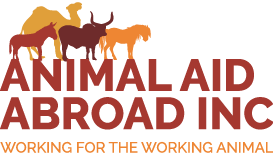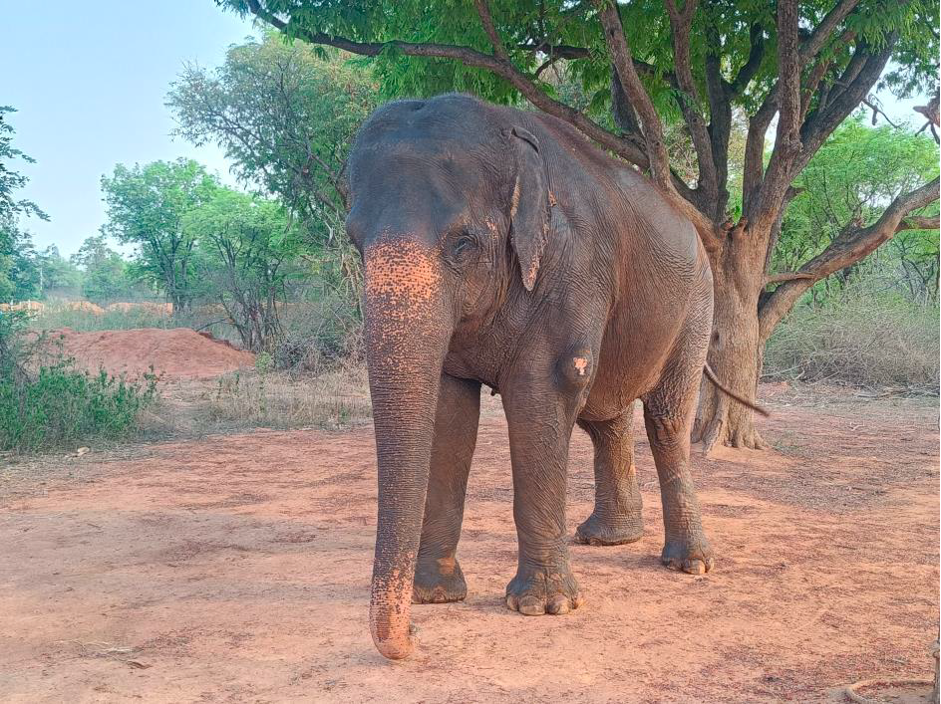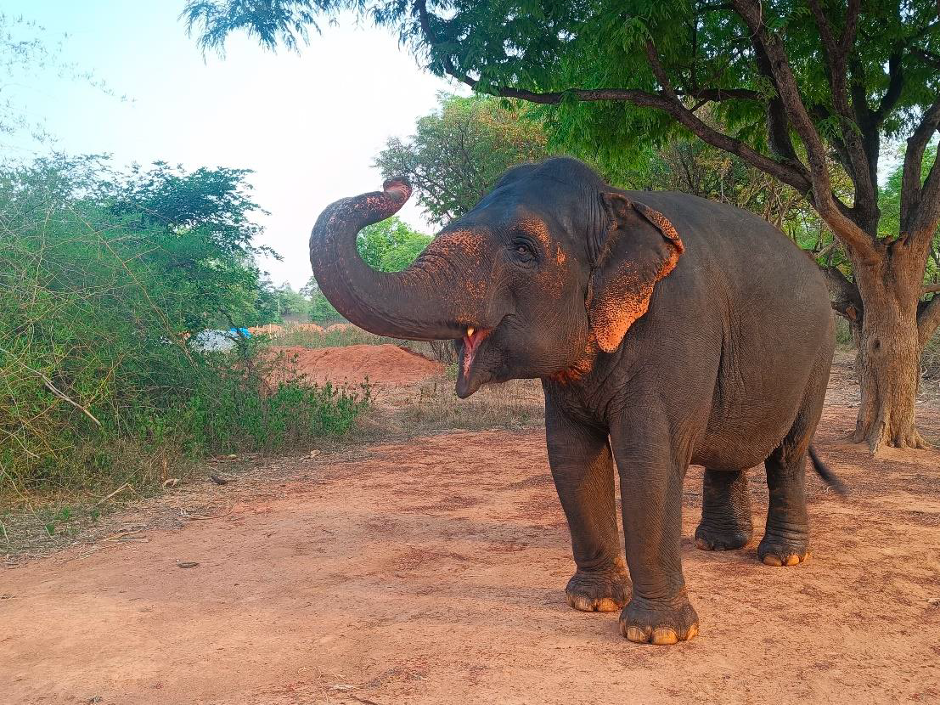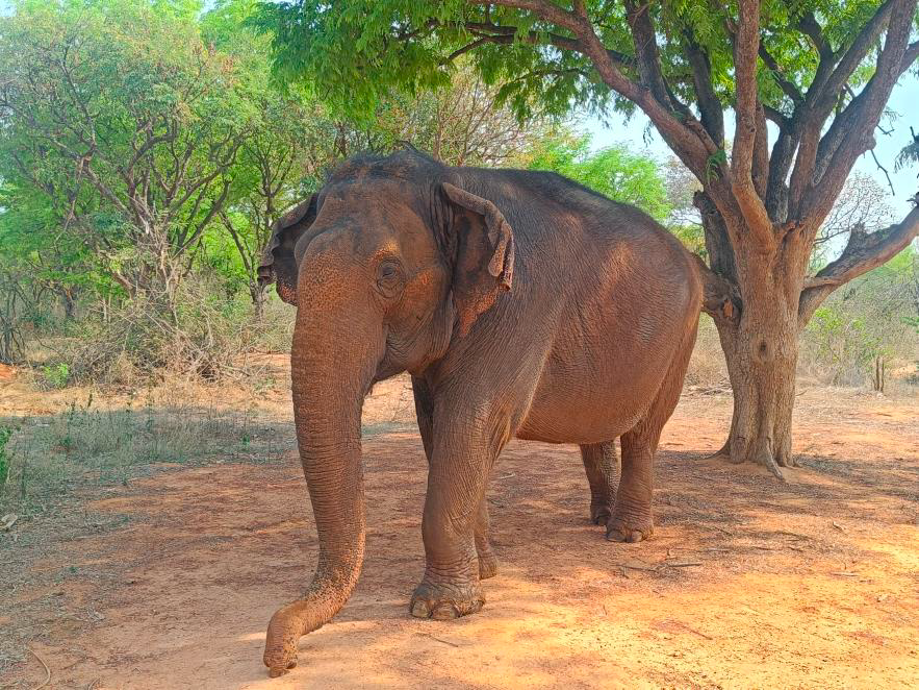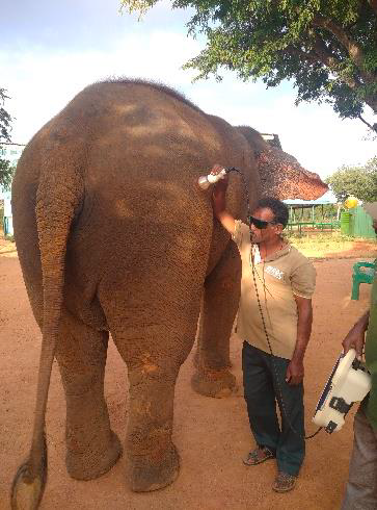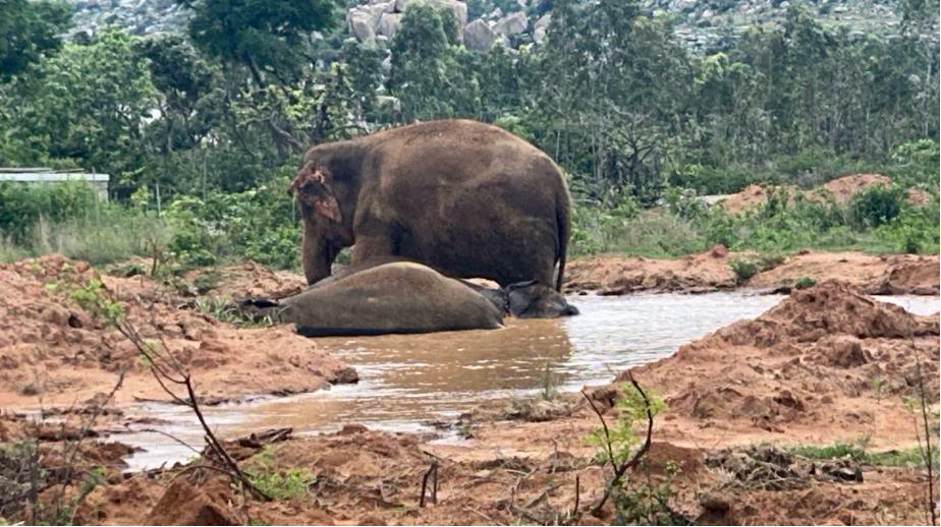Elephants Given a Second Chance at Our Newest Partner Sanctuary
AAA’s newest partner group is the Wildlife Rescue and Rehabilitation Centre (WRRC) in Kolar, India. They rehabilitate captive elephants who have endured years of harsh treatment and poor conditions. Many of the elephants have multiple health issues due to past neglect and abuse, so they require intensive care and treatment.
With assistance from your incredible donations, we are now able to support WRRC in their mission to enhance the health, wellbeing and quality of life for these elephants. Read on to learn more about captive elephants in India and the rescued elephants now living in WRRC’s sanctuary:
India is home to nearly 4,000 captive elephants-many of whom live under deeply distressing conditions. Torn from the wild at a young age, these elephants are often separated from their families, subjected to harsh training practices, and forced into environments that offer little in the way of proper nutrition, medical care, or social interaction. This results not only in physical ailments but also in long-term psychological trauma.
Captive elephants, much like humans, are social beings who naturally thrive in herds. Deprived of this fundamental social structure, their innate behaviours begin to fade, leading to emotional, cognitive, and physical deterioration—much like the impact of solitary confinement on humans. The consequence is a life marked by fear, stress, and suffering.
Rehabilitation is not just a compassionate response—it is a critical intervention. Providing rescued elephants with sanctuaries where they can heal, express natural behaviours, and bond with other elephants is essential for their wellbeing. These facilities offer enriched environments, proper veterinary care, and the opportunity to recover from years of neglect and abuse.
Our efforts have been focused on advancing the rehabilitation and care of these majestic animals—working to restore their dignity, health, and natural spirit, while also raising awareness about the urgent need for humane treatment of all captive elephants in India.
Meet some of the residents living at the sanctuary below:
Champakali
Champakali – otherwise known as Champa - suffers from chronic abscesses, epilepsy, abnormal gait and nail issues, dehydration and electrolyte imbalance, and infection/inflammation.
She is being treated with vitamin, mineral and joint supplements, prebiotic and probiotic supplements, anti-seizure medications, daily wound and abscess care, and routine nail and foot care.
Durga
Durga requires foot care due to a flawed gait and nail/pad overgrowth. He has sensitive, dry skin prone to sunburn. He also has osteoarthritis and recently had a strongyles (parasitic) infection.
Durga is being treated with vitamin, mineral, joint, B-complex, B12 and zinc supplements, along with prebiotic and probiotics. Coconut oil is used to sooth his skin.
Janumani
Janumani requires foot care due to chronic interdigital dermatitis. She also needs tusk care because of deep root infections. Janumani also suffers from osteoarthritis and has had a parasitic infection.
She is being treated with vitamin, mineral, and joint supplements, prebiotics and probiotics, laser therapy, deworming and tusk antiseptic care.
Gowri
Gowri also requires foot care due to chronic interdigital dermatitis and tusk care due to deep root infections. She also has osteoarthritis and a parasitic infection.
Treatments for Gowri include vitamin, mineral, and joint supplements, prebiotics and probiotics, laser therapy, deworming and tusk antiseptic care.
Rani
Rani suffers from osteoarthritis and fighting-related injuries.
Her treatments involve tusk care, nail care, vitamin, mineral, and joint supplements, laser treatment, prebiotic and probiotic supplements and ashwagandha.
Lakshmi
Lakshmi has reduced mobility in her left forelimb, impaired vision in her left eye and an inability to lie down. She suffers from sleep disturbance and behavioural changes due to suspected anxiety and pain.
Her treatments consist of laser treatments, vitamin, mineral, and joint supplements, prebiotic and probiotic supplements, Hypersol ointment for her eye, and sleep and behavioural monitoring to identify stressors.
Feeding
All elephants at the facility follow a structured and balanced daily feeding schedule that caters to both their nutritional and behavioural needs. Throughout the day, fodder is made available at regular intervals. Elephants have continuous access to fresh fodder, promoting natural foraging behaviour and supporting digestive health. On average, each elephant consumes between 120–150 kg of fodder daily.
Lakshmi is provided with a specially enhanced diet designed to meet her size and specific health needs. Her daily intake includes 10 kg of fruits and vegetables in both the morning and evening. During the day, she is also given around 20 kg of grass or 8 banana stems, alongside her regular diet.
Enrichment Activities for Elephant Rehabilitation
Enrichment activities at the Elephant Care Facility are intentional and structured interventions aimed at enhancing the physical health, psychological wellbeing, and expression of natural behaviours in captive elephants—particularly those undergoing rehabilitation after prolonged periods of neglect, injury, abuse, or inadequate care.
In the wild, elephants spend most of their day grazing, socialising, walking, bathing, and interacting with diverse stimuli in their environment. Captive conditions often limit these behaviours due to space constraints, predictable routines, and the psychological impact of trauma. Enrichment at the facility seeks to bridge this gap by simulating key aspects of the wild and encouraging instinctive, species-appropriate behaviour.
Over the past three months, elephants were provided with daily free-grazing sessions in open areas. These not only enabled natural foraging but also supported gut health, improved foot condition, and offered essential mental stimulation. Regular mud baths and access to a hydrotherapy pool played a critical role in thermoregulation, skin maintenance, and musculoskeletal relief—especially important for elderly or injured elephants. In addition, cool water showers were scheduled to aid temperature control and hygiene.
To promote physical fitness, elephants participated in scheduled 4 km evening walks that supported cardiovascular health, muscle tone, and digestion. Supplemental fodder—up to 100 kg per elephant—was scattered strategically throughout the day, encouraging exploration, sensory engagement, and minimising boredom.
Importantly, the elephants were also observed engaging in positive social interactions during their unstructured time. These interactions contributed significantly to emotional recovery, herd bonding, and overall psychological wellbeing, particularly for individuals previously rescued from isolating or stressful environments.
Together, these carefully designed enrichment activities are a cornerstone of the facility’s rehabilitation approach, fostering recovery, resilience, and a return to natural behaviour patterns essential for long-term welfare.
Conclusion
The April–June 2025 quarter marked steady progress in the ongoing rehabilitation and welfare of the rescued elephants under WRRC’s care. Each individual elephant demonstrated responses to targeted medical treatments, nutritional plans, and enrichment protocols tailored to their specific health and behavioural needs.
From addressing complex medical issues such as epilepsy, osteoarthritis, and parasitic infections, to implementing structured enrichment activities that foster social bonds and encourage natural behaviours, the facility continues to prioritise holistic and compassionate care.
A behavioural study in collaboration with Arocha India provided valuable insights into the elephants’ social dynamics, further reinforcing the importance of herd structure and individualised attention in their rehabilitation journey. Regular foot care, improved feeding routines, and active environmental engagement have supported the elephants’ physical and psychological recovery.
Moving forward, the focus will remain on maintaining consistency in treatment, monitoring chronic conditions, enhancing enrichment efforts, and strengthening capacity for long-term rehabilitation.
